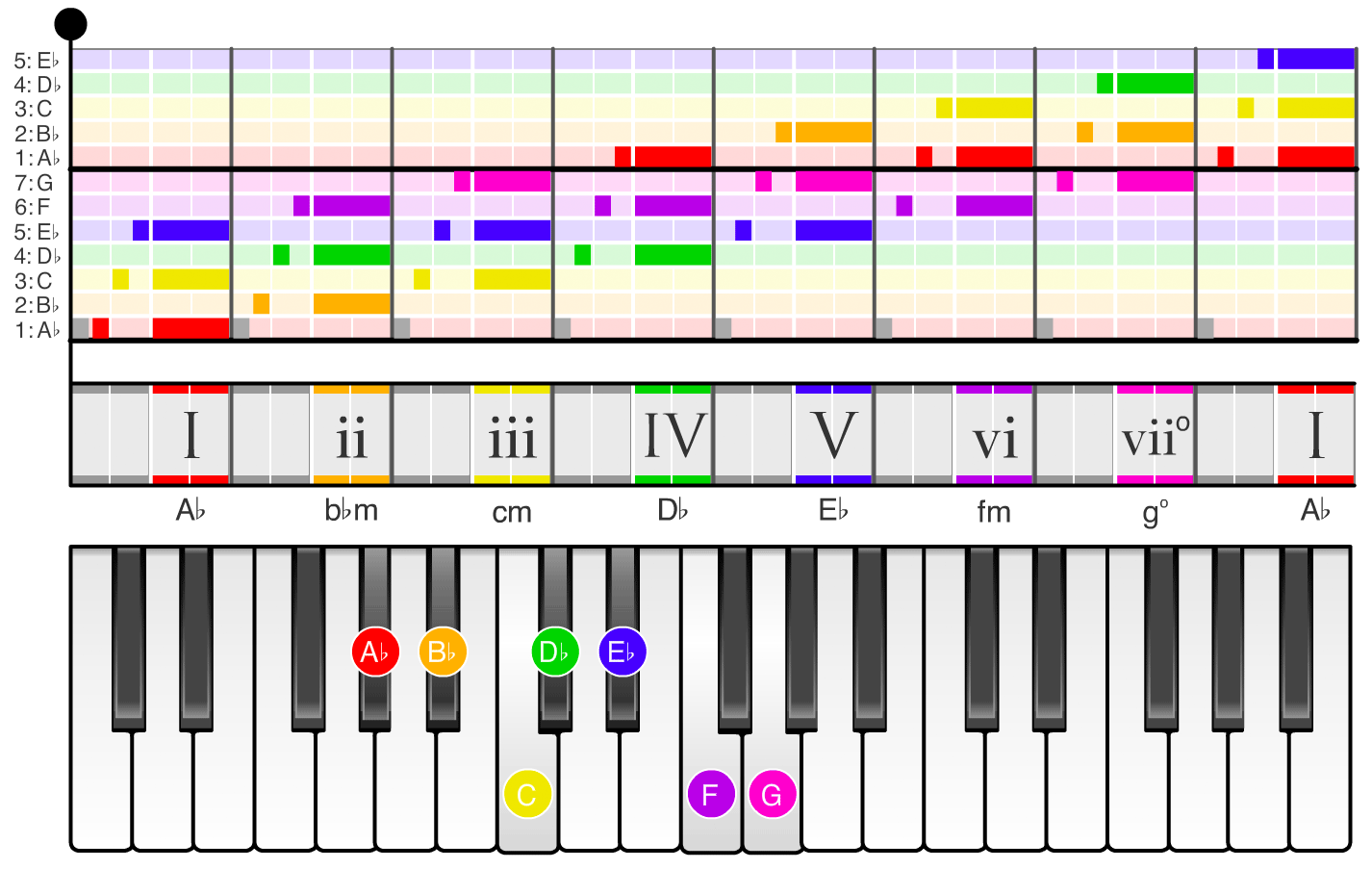
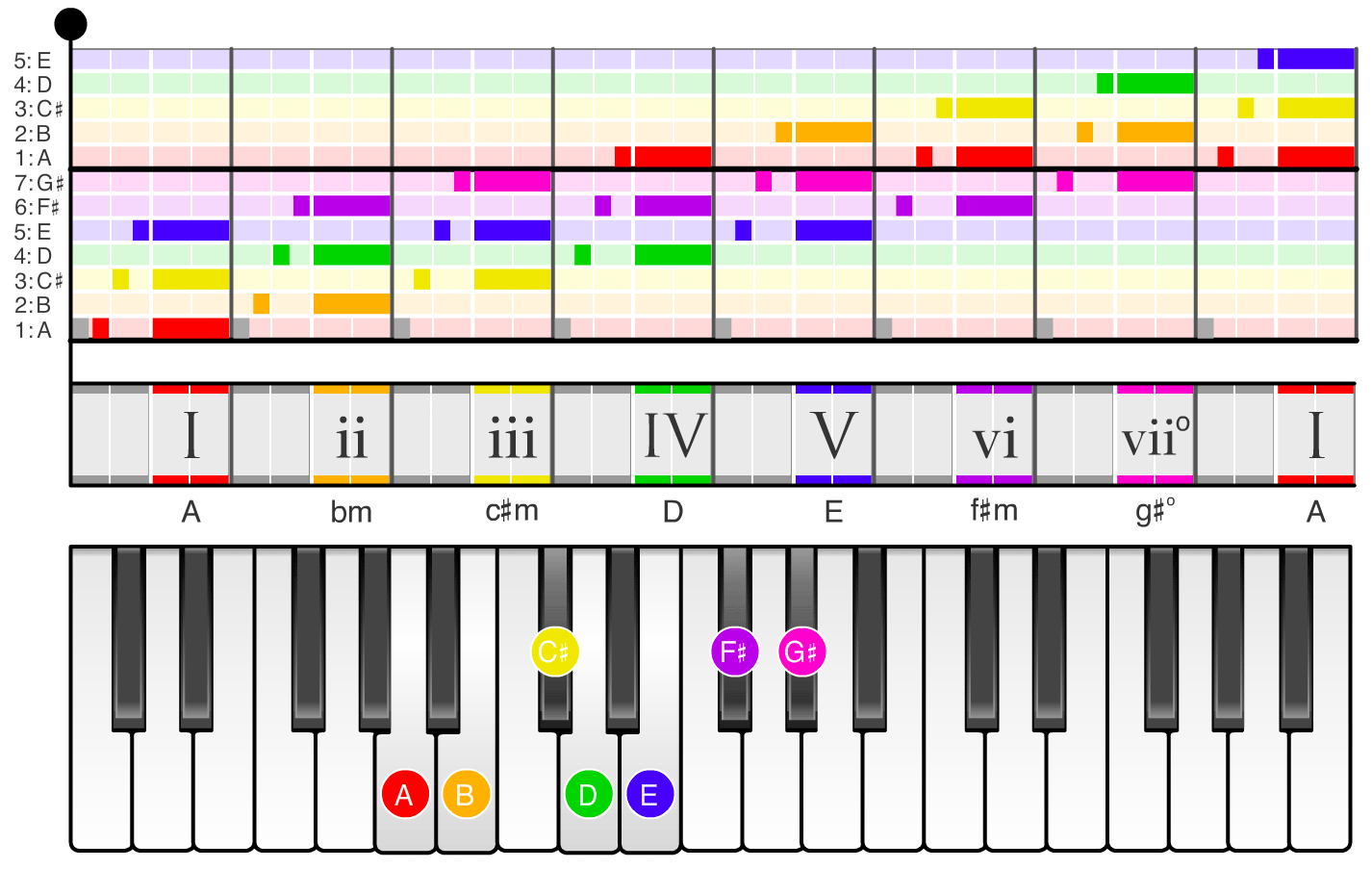
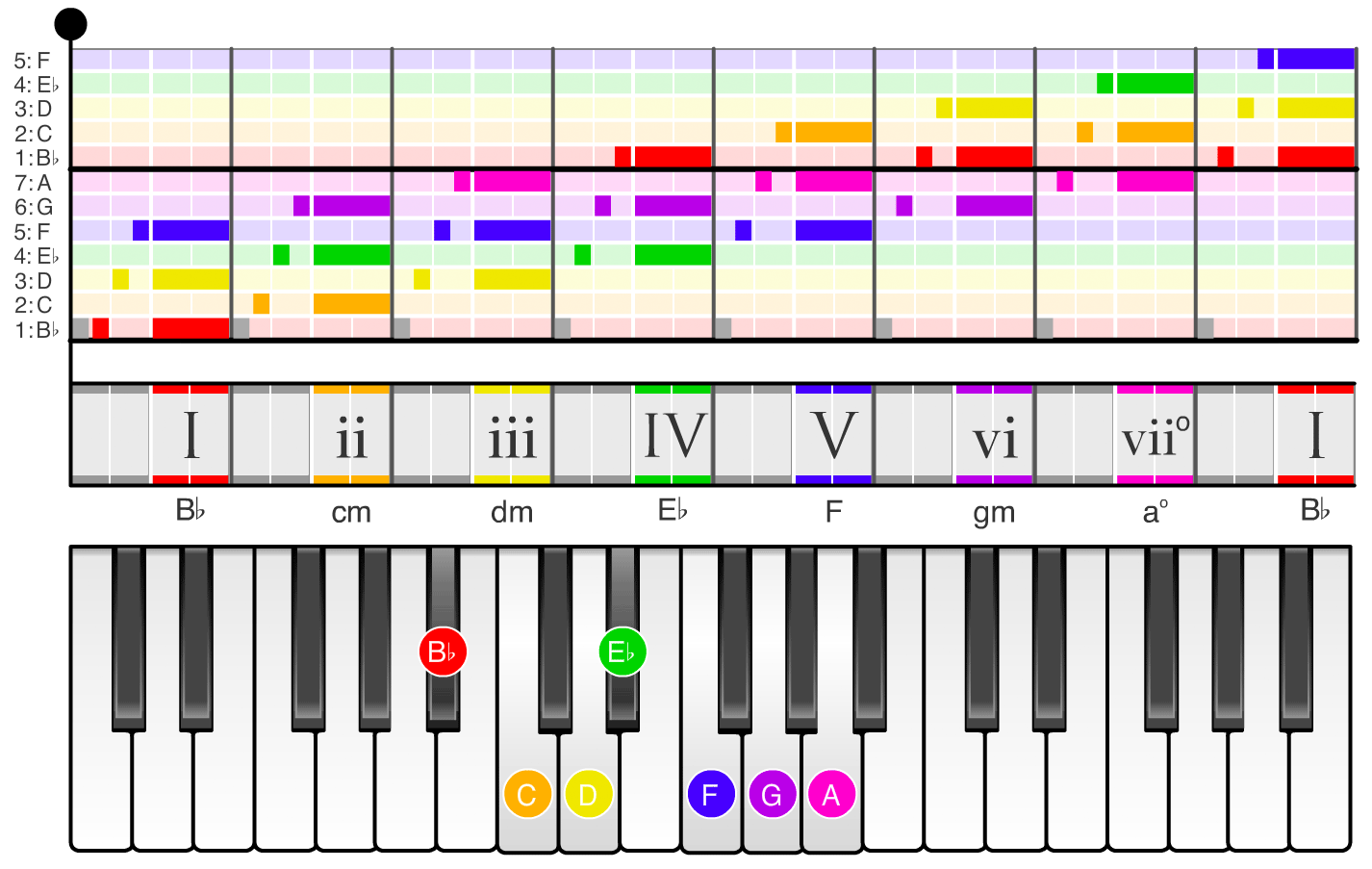
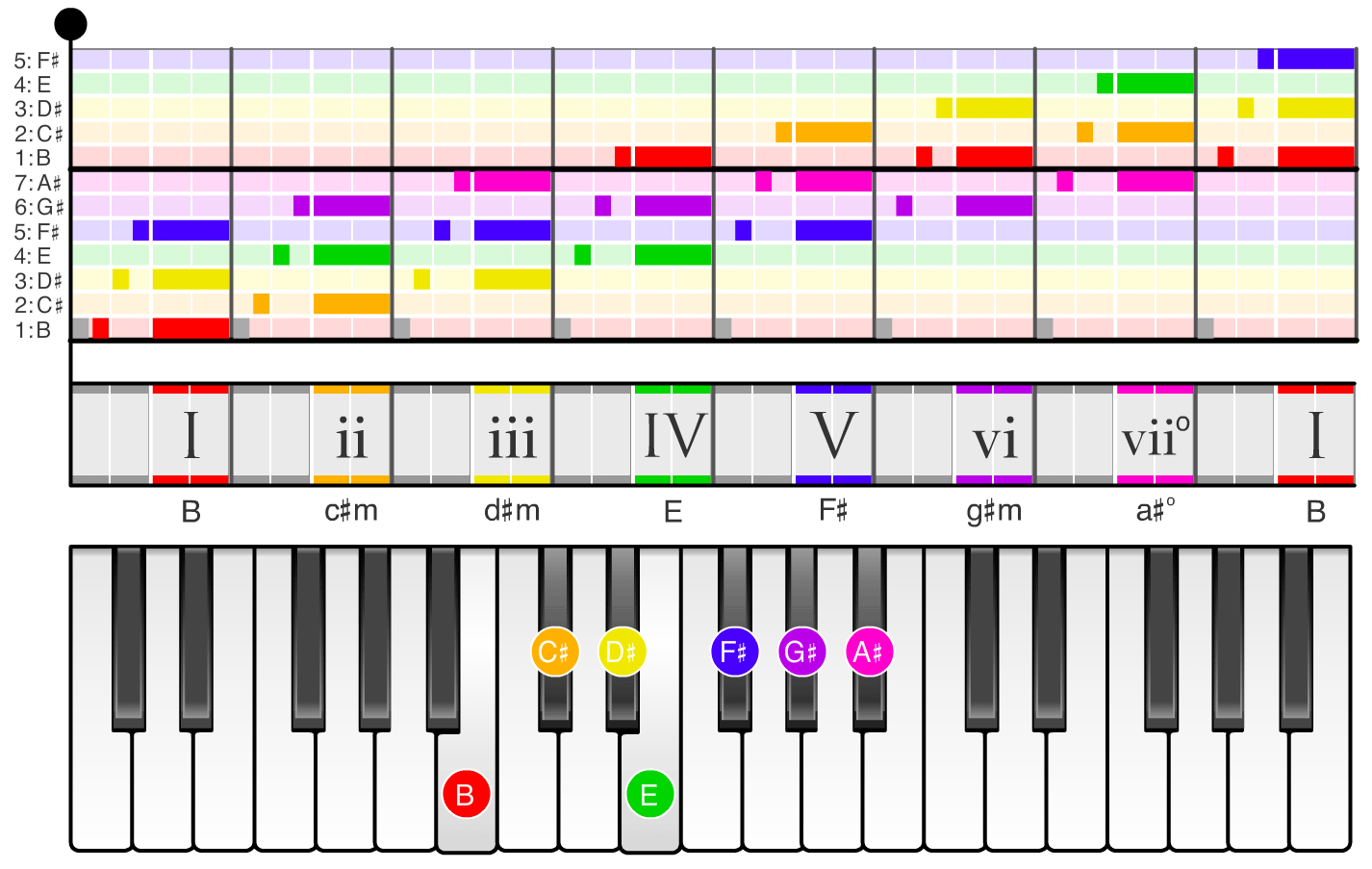
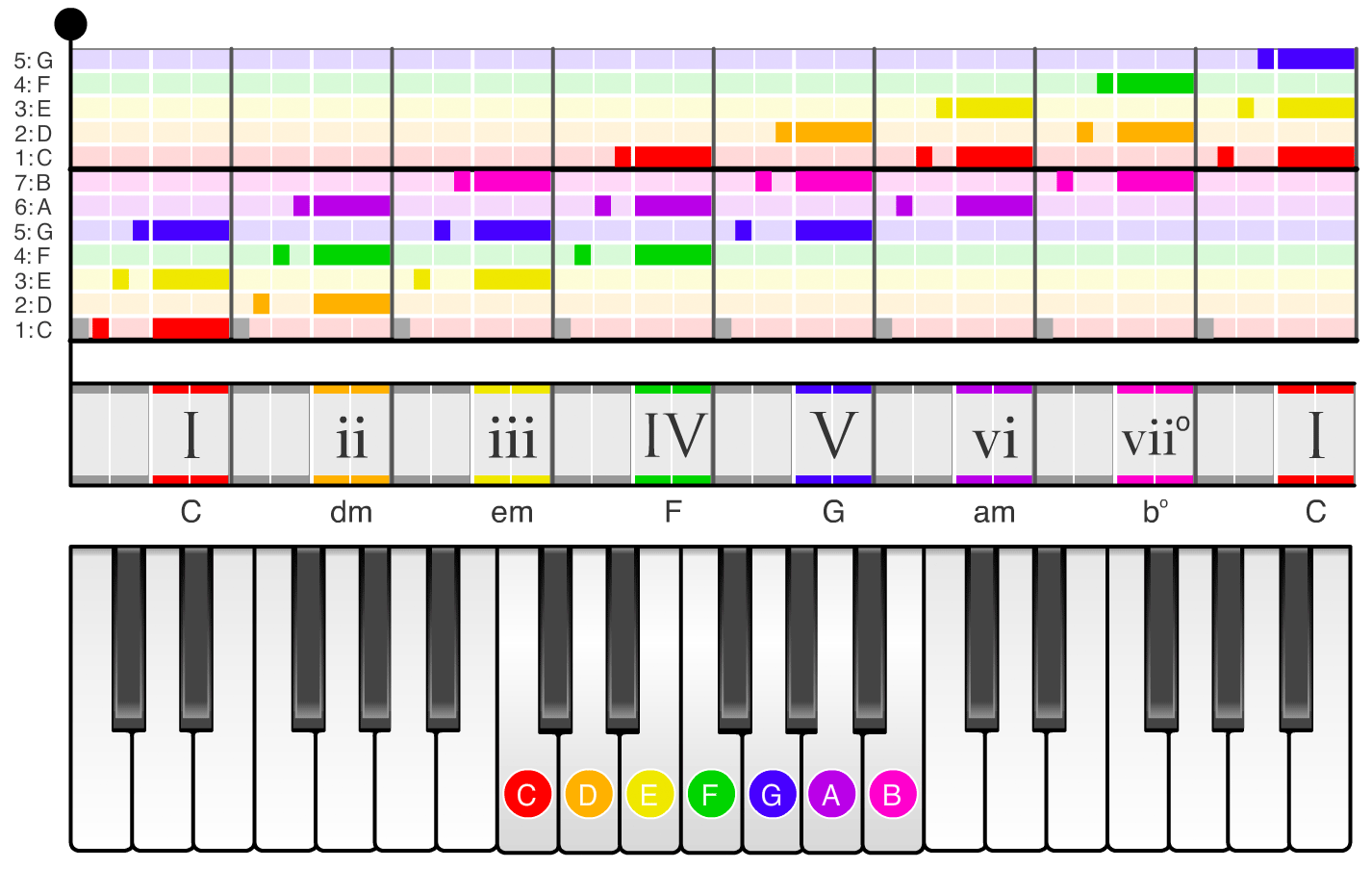



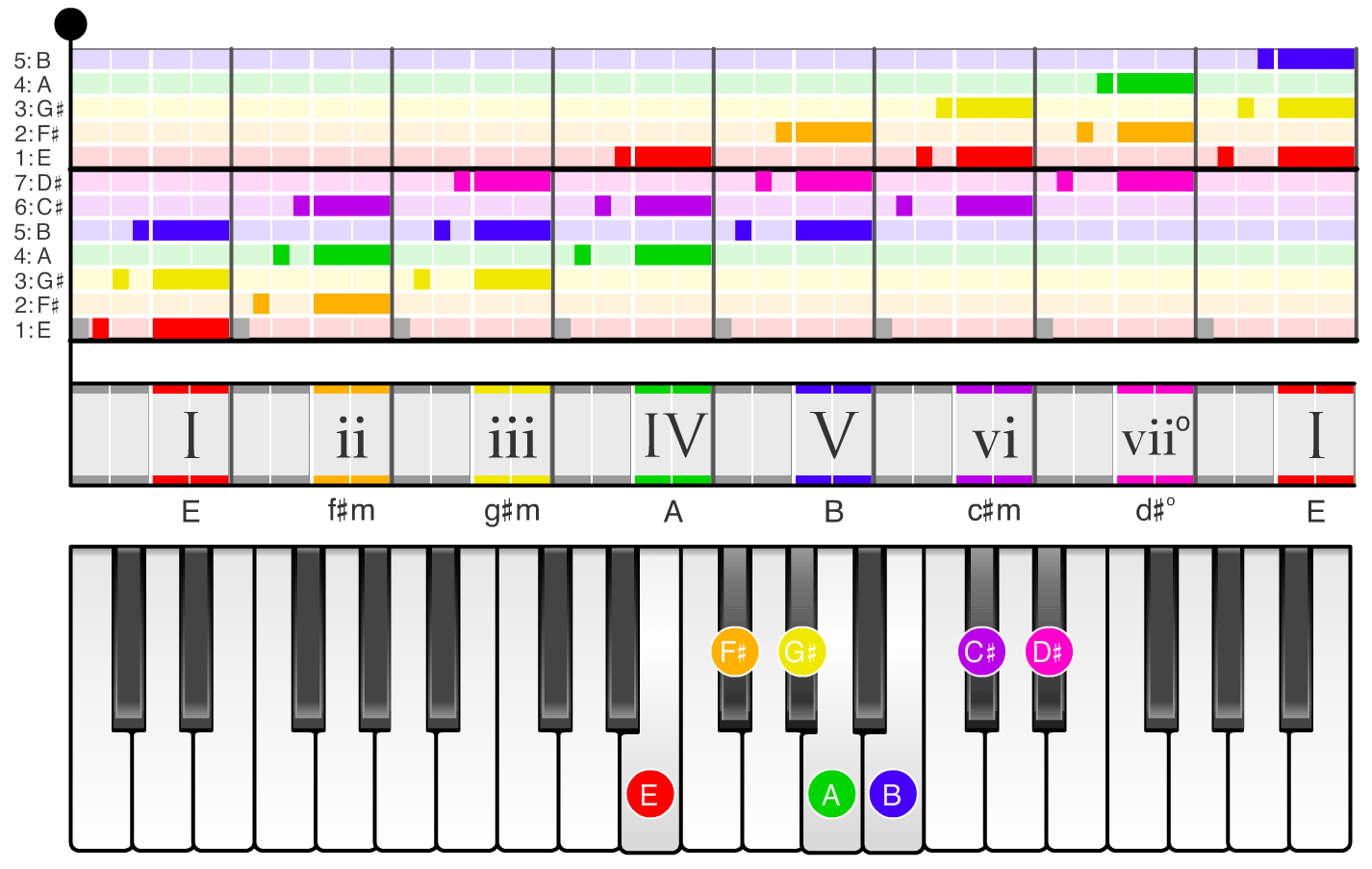


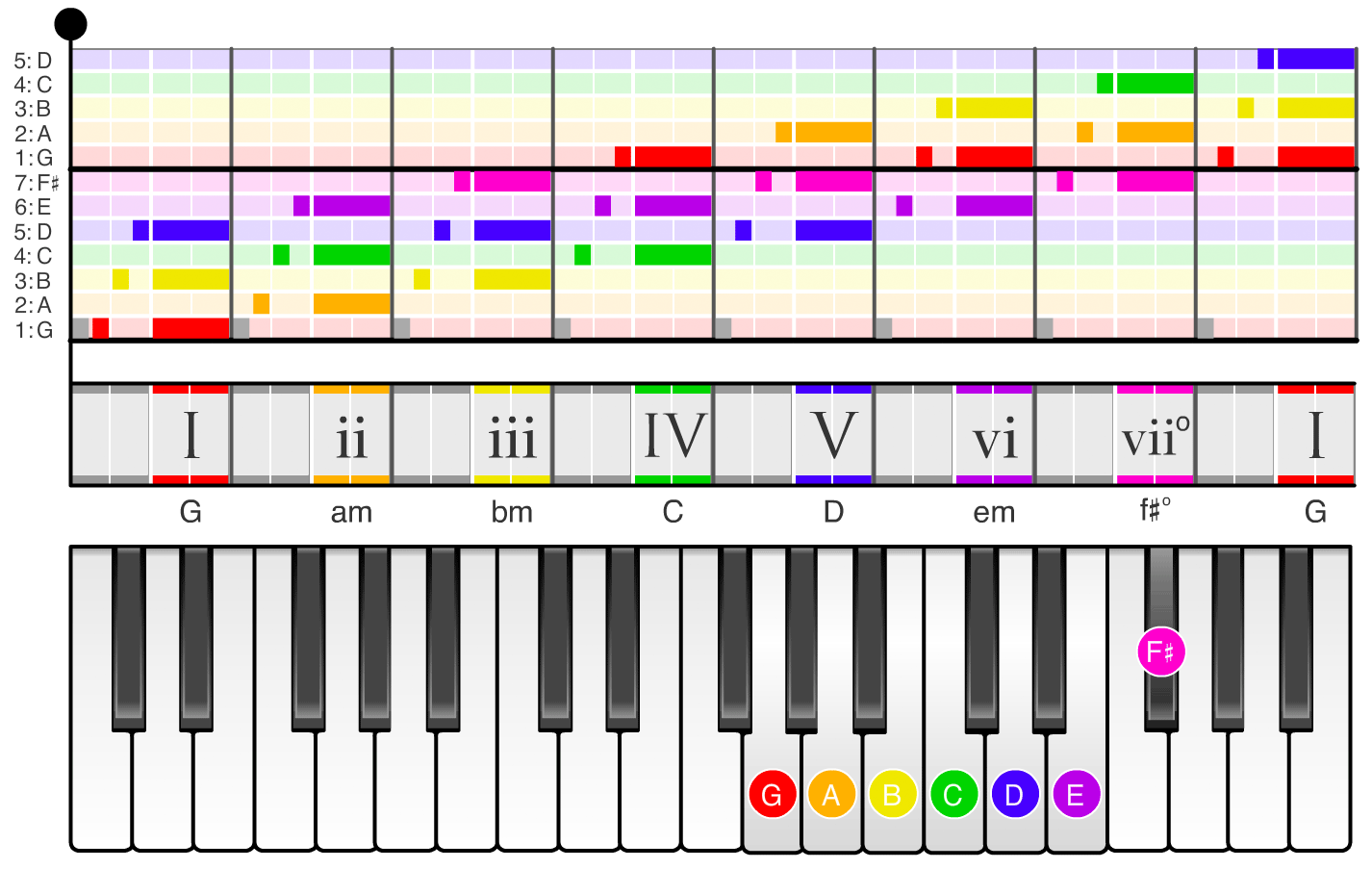
While it is perfectly possible to write a song with only I, IV, and V, most songs do not limit themselves to these chords. One problem is that, as alluded to in Chapter 1, I, IV, and V are all major chords. This lack of variety means that the range of emotions that one can evoke is somewhat limited. One obvious way to make things more interesting is to include a minor chord in the mix, but which one to choose? Recall that the basic chords consist of the following:
That means our choices for minor chords are ii, iii, and vi.
While ii and iii are both minor chords that would fit the bill, vi is significantly more common. vi is very versatile and can be used in many situations without sounding awkward. It can be used after I and sounds great before or after IV, and V, for example. We’ll learn how ii and iii are used in Chapter 4.
Let’s listen to the chords from “Don’t Stop Believing” by Journey to see how it incorporates the vi. Concentrate on the third chord (the vi) to get a feel for how vi sounds.
This particular progression (I → V → vi → IV) is popular across many genres of popular music and shows up again and again. It has been used in so many songs that people have taken notice. Below are a few songs that have used this progression.
One thing to keep in mind, is that the versions of these songs that you hear on the radio are not all in the same key and would seem to use different chords if you were to purchase the sheet music or guitar tab for them.
Lastly, the message to take away from this video is not “all I need to be a pop star is this magical progression!” If your entire song only consisted of these four chords repeated over and over again in this order, it wouldn’t be very interesting. That’s why the songs from the previous example usually don’t rely exclusively on this progression. Other parts of the songs use different chords that complement the I → V → vi → IV so they don’t get old.
Next up: Being Creative